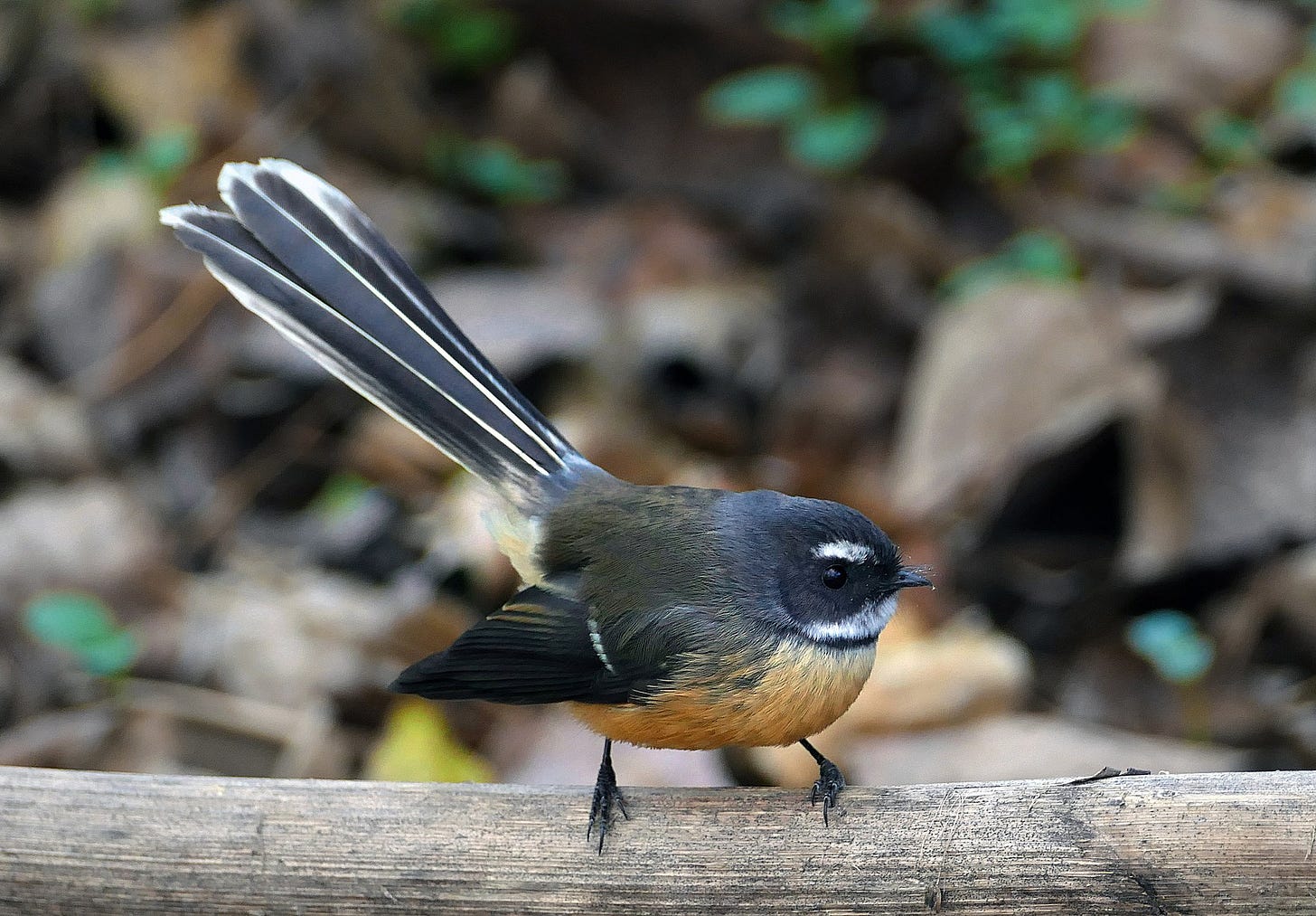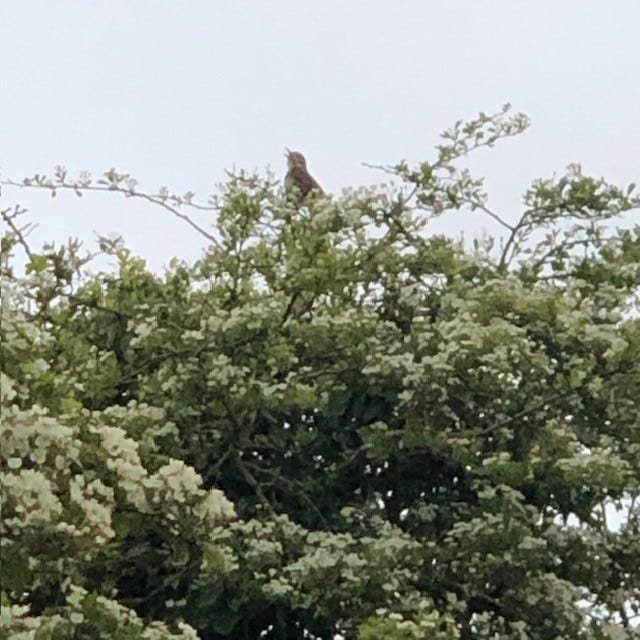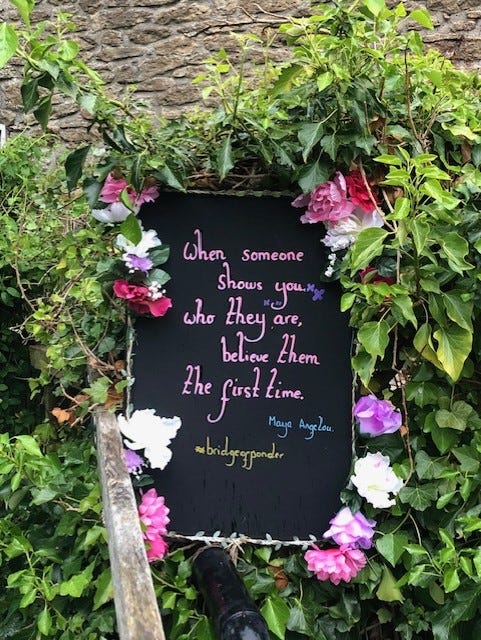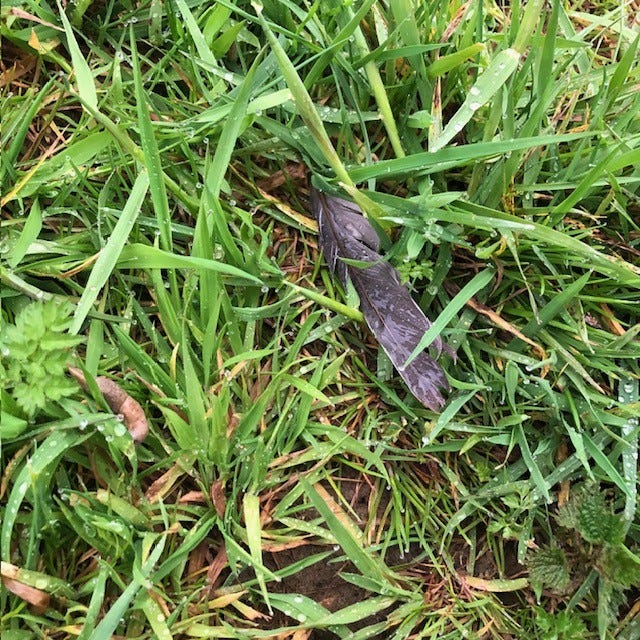NOTE- Written on Sunday, though I didn’t hit publish until the final edits were complete on Monday, so there may be some confusing references to days!
Did any of you celebrate Star Wars Day on Saturday? I saw some photos this morning from of a Star Wars party which looked fun. People were dressed up as Princess Leia, Yoda, Stormtroopers and Darth Vader. Perhaps you didn’t know that such a day even existed? It’s also, I learned today, referred to as Force Day. It’s on May the fourth.
May the fourth be with you…
In case you’re curious, the first reference to this phrase (a twist on the phrase ‘May the force be with you’, from the original Star Wars film), was apparently as long ago as 1979. It was apparently printed in the Evening News, the day after Margaret Thatcher became UK’s first female Prime Minister-
‘May the fourth be with you, Maggie’ it said, according to Wikipedia.
Regular visitors will know that I like to check the accuracy of quotes, so I’ve done my best to fact check this one, especially because the citation is followed by a very tiny superscript of ‘dubious’. A Newsweek article gives more details, suggesting that the comment in the paper was an ad bought by the Tory party. The article by Andrew Whalen, May 3rd 2019, attributes this revelation to Alan Arnold, stating that the information appears in his book Once Upon a Galaxy: A Journal of the Making of The Empire Strikes Back. I haven’t found verification on this, nor read the book, so for this one I’m trusting Andrew Whalen!
Aside- Whilst in the rabbit hole of verification I landed on a video warning about the perils of the May 4th celebrations. Star Wars fans might find it amusing...
https://www.starwars.com/video/star-wars-day-attack-ad-say-no-to-may-the-4th
By now eyes might be glazing over, but please don’t leave yet. I only mention Star Wars Day, because it is one internationally celebrated day that happens in the first week of May. Today’s post is actually about another one. I think you’ll like it.
The International day of..?
Sending Star Wars Day to a galaxy far far away, we come to International Dawn Chorus Day. This has no fixed date, but falls on the first Sunday of the month of May, which is the day that I write this. International Dawn Chorus Day encourages people to get up well before the crack of dawn to listen to, and celebrate birds, and birdsong.
As I wrote that sentence, a silly thought popped up in my head. One of Edith Pritchett’s brilliant Venn diagrams in The Guardian, so I paused my writing, and constructed my own, shown below. Mine comes without Edith’s witty categories, so feel free to offer your best ideas in the comments at the end! Where do you place yourself in the Venn diagram?
I’m on the edge of the blue circle, nudging up to the overlapping zone, and am sure that I could be tempted in, if I were invited to a Star Wars party next year!
After creating the diagram I realised there is probably another group of people, and I added the yellow circle to be inclusive. If this is where you find yourself, I thank you for continuing to read!
Birdsong always lift my spirits. It was the most glorious consequences of the early days of the pandemic, the volume suddenly loud and joyful, and I always associate it with going to my allotment, far from the noise that smothers their tune in town. There is a tree above the seating area in which a robin perches and tweets, in conversation with the robins in other trees on site. I can’t see them all, but I sink into their joyful song with gratitude. I could listen to this always.
After learning about International Dawn Chorus Day about 10 years ago, I’ve often searched for a local morning chorus walk. Each time I am reminded of how organised other people are, and how far in advance it is possible to plan one’s life. I look too soon for the dates to be set, then too late, and every spot is booked up. In some ways this has saved me, as the walks tend to be on nature reserves, at best an hour’s drive from me. To arrive on time for the 5 am start, a 3:45 get up, at the latest, is required. Relief slightly softens the disappointment every year, but the desire has endured.
One year I had a DIY Dawn Chorus Day walk. I drove to a large park where I would walk regularly before work. There are many trees, hedges and birds, and it was the perfect place to go in the darkest hours of the morning because I knew it, and I felt safe (As safe as a woman can ever feel going to a park to wander around in the dark hour of the early morning on her own). And it was amazing. I found the video clip of it on an old laptop this week, and it reminded me of the thrill of being there in the dark. How my inability to see and the adrenaline, heightened my hearing sense, and combined with the relative silence of the park, made the birdsong so loud.
It was a magical experience, so when I saw a local bird walk that started at 6am, I booked in straight away. Admittedly this was too late for the dawn chorus itself, but it meant I could leave the house at 5:45 rather than 3:45, and it was in the company of others. So this Friday morning, I obeyed the call of my alarm, got myself up and out of the house, to arrive at the meet point on time.
Birdsong for Dummies-
I don’t know about you, but I struggle to identify birds from their song. If you are a regular reader of Willow Blooms this confession will not come as much of a surprise! I was therefore delighted to learn this week, when making an offhand comment to a friend, that there is a phone app that can help. Of course there is! A brilliant app called Merlin Bird ID (no affiliations!). It’s super simple. You stand outside, a bird sings, and a name appears on the screen. More birds sing, and more names appear, each name marked in yellow when that song is detected. When three birds sing at once, it flips between names, as they occur.
I love it!
I looked for this kind of app a few years ago, and could not find anything like it. Instead I was reliant on recorded songs on the internet, trying to identify them from memory, or from recordings of the bird songs that I brought home. It was impossible. Birds sing like a jazz band on acid.
They change their tune at random intervals, have no regard for rhythm or order, singing over each other, sometimes seeming to converse, other times silent. How can an untrained ear hold onto one song, when you have no idea which direction to rotate your head to best gather their sound? You cannot see them in the leaf-filled trees, and if you do, cannot identify them before they have taken flight into the next tree. All of this makes it very difficult for the common garden ornithologist!
The Merlin app is birdsong ID for dummies, doing all the hard work (name probably already trademarked!). So, arriving on Friday morning, with the birdsong app downloaded on my phone, I enthusiastically met the others. We exchanged hellos, rubbing the sleepy bits from our eyes, faces full of smiles. The birds certainly heard us coming along the path to the local grassland, as we crinkled in our waterproof jackets. By the time we arrived, they were likely long awake, chirping away in the surrounding trees and hedges.
After a little pause to enjoy the sounds from a place of stillness, I pressed record on the app. At the top of the screen, a line squiggled up and down like a heart monitor, recording the sounds. Underneath names of birds popped up. Each time the app recognised a new bird, a new name appeared. True to their acid jazz style, the birds were vocal and it was difficult to discern one from another, but over time, the flashing names meant the sounds were slightly more distinguishable. The two most simple to identify were the wood pigeon and the robin, but there was quite an unexpected range. The app identified the following birdsong (in order of appearance, I think!)-
Eurasian Blackbird
Eurasian Wren
Song Thrush
European Robin
Common Wood-Pigeon
Greater Spotted Woodpecker
Eurasian Blackcap
European Goldfinch
Dunnock
New Zealand Fantail (??)
Eurasian Blue Tit
Great Tit
House Sparrow
Yellow Breasted Chat
Common Chiffchaff
Booted Eagle (??)
I am not a seasoned twitcher, but like the May the Fourth Wikipedia article, I think some of these names might need a superscript of ‘dubious’. The map below shows the booted eagle’s typical seasonal range, and the UK is very much out of all of it. I think we can cross that off the list for a start.
I also cast doubt on the presence of the New Zealand fantail. This bird is typically found in the North and South Island of New Zealand, or the Chatham Islands, according to Wikipedia, so I am about as far outside their preferred region as I could possibly be. This puts me in mind of Ali Smith’s book Winter, where the son, a lying blogger, has his website hacked by an ex-girlfriend bent on revenge. She posts a blog reporting sightings of a rare bird in Cornwall in an attempt to ruin his reputation, but when coachloads of people go to witness the bird, it is indeed sighted.
I’d love to to see this beautiful bird in the hedgerows near my home, but accept it is unlikely! So, the app is interpreted with a large pinch of salt. Or, I might simply need to set my location, giving the algorithms more chance at getting the correct matches.
What I can share with you, is a photo of a bird I actually saw and heard proudly singing at the top of a tree.
This little bird was a gift. Typically song came from the trees, or deep within bushes that concealed the singers, but on the edge of one field, this bird was trilling loud and proud. The app kept flashing
wren,
wren,
wren,
but I am pretty sure wrens are much smaller than this bird and perhaps the app was distracted by wrens singing in the trees. Can I trust myself on this one?! I think it’s a thrush.
Birds and wellbeing
The morning walk was arranged by the local lead of the town’s ‘Green and Healthy’ projects. Their remit is to support locals to ‘live lives which are good for their health and the planet- if we improve one, we’ll also improve the other’. They achieve this by offering a range of community based initiatives to support greener and healthier lives, and it’s all funded by money from the town council, the medical practice and National Lottery Climate Action funds. They do fantastic work.
Although it was a small group (the weather forecast likely put the others who’d booked in off), it was a great event. We continued walking for a few miles, soaking up the bird song, stopping to chat to a horse, and finding inspirational poetry beside a bridge.
Back at the base, with cups of coffee and a selection of bread for toast with homemade marmalade, a question arose which was something like-
Do you have enough contact with nature?
We each responded differently. Some live in a village, surrounded by fields where they don’t consciously have to go looking for nature, and others live in town, where it is more of an effort to find greenery. But we are very fortunate, our town is currently surrounded by greenspaces in every direction, and when we go to them, we each feel the benefits. All of us experience an uplift in energy and mood, as if plugged into nature’s recharging point. There is plenty of research evidence for the links between nature and well-being, and ‘Green prescriptions’ are increasingly common.
‘Green social prescribing is the practice of supporting people to engage in nature-based interventions and activities to improve their mental and physical health. Social prescribing link workers (and other trusted professionals in allied roles) connect people to community groups and agencies for practical and emotional support, based on a ‘what matters to you’ conversation.’
https://www.england.nhs.uk/personalisedcare/social-prescribing/green-social-prescribing/
There’s a toolkit you can download to help embed green social prescribing into communities- In case you’re interested, I’ve put the link for this here.
Part of me thinks that these initiatives are brilliant, and another part of me is sad that we need to prove the value of engagement with green stuff through scientific research. It seems to come from a place of questioning what has been the most obvious thing in life to me since my childhood- that being in green spaces alongside nature, is good for us. It is vital. Also it suggests (or highlights) our separation from nature, forgetting that we in fact part of it, and that we are one and the same. I write this, mindful that there is a great privilege in having had access to green space since I was born. It is only now that I realise that I have lived in houses with fields on at least one side of the fence until I was 11. At 11 the agricultural field was replaced by a school field. This is clearly not a universal experience. If it takes a body of research evidence to irrefutably prove that regular contact with nature benefits our health and well-being, and this in turn supports actions that ensure more people (ideally everyone) have free access to greenspace and wildlife, then I’m all for it. If it helps to reduce the harm to the green spaces we have left, then I’m also all for it. Still, all this money is being spent researching the impact of nature on wellbeing and bringing people into contact with it, whilst billions more is spent mindlessly destroying it. My heart breaks thinking about it. What can be done?
A wise woman said to me this week, we need to remember that we are of earth, earth is not ours.
It is always nature AND nurture
I do not have the answers, and can only speak of my intention to find some. So for now, I will finish with a picture and a passage. The image below is of the rain speckled ground on Friday’s walk. The delicacy of a feather, and if you look closely amongst the grass, a slug and nettle leaf.
We know the importance of nature- this knowing is already deep in our bones.
Today I also came across a letter to us all on the Barbican’s website, posted on 20th April 2022. The letter formed part of their exhibition, Our Time on Earth, which the website says invited thought about how we live in ‘delicate balance’ within the ecosystem, and radical ways in which we could live. Sadly I didn’t go and see the exhibition, but I am glad to have spotted the letter by ‘Indigenous activists from Brazil, Sônia Guajajara and Célia Xakriabá, in collaboration with Earthrise’.
It begins…
We are the Earth. We arise from the Earth and we return to it. The Earth is within us. The Earth is our sister, our daughter, our aunt, our mother, our grandmother. The earth is our womb, our food, our cure. The power of our chants connects us to the charms of our ancestors. We are the ones who – through our hearts – hear the cry of the Earth. In the echo of this cry, the daughters and sons of the Earth cry too. We are the ones who no longer wish to remain deaf. Nor in silence. We have seen daughters and sons die at the hands of the colonisers. We cry with the fire that burned Galdino; with the cowardice that stoned the baby breastfeeding its mother. With the genocide – of the black body, of Indigenous peoples. We are the seed, the root, the forest, the rivers, the woods, the animals, the cosmos. Our chanting is ancestral. We never sing alone. We are relatives. The collective inhabits us.
These are powerful words for us to consider on Dawn Chorus Day, and on any day. The pandemic brought the sounds of nature more loudly into our lives, and we need to keep finding ways to nurture our nature in all its forms.
‘There is still time to heal humanity and save the Earth.’
I believe so too, although some of the letter and its message may be difficult to read, to accept, and to get fully on board with. The authors invite each of us to join in the fight for an alternative.
Therefore, we fight for another world to flourish. In the face of the crisis of capitalist civilisation – confronted with serious ecological, social, economic, health and political problems –it has never been so urgent to value the resistance of Indigenous peoples and their world views. Values based on relationships of belonging to nature, generosity, non-accumulation of goods, non-commercialisation of life and cultural resistance.
It can be hard to live in a world that bombards us with messages of things we supposedly need to be happy. The letter challenges the values we might take for granted. After reading it, another Venn diagram came to my mind…
My job involves talking and considering the ways that people process their experiences, how they can make changes that bring them into greater alignment with their values and needs, and bring healing. I do not often talk about political movements with clients, although I often think about them for myself. The letter’s message is that we need to make bigger changes. It says that the earth cannot flourish unless we shift our values and world views. We belong to the earth, the earth does not belong to us, and we are called to turn back to the wisdom of the land.
When we learn from the land, it is a book that never ends.
Can we learn from the birds, and the land?
On Friday, as we walked to the furthest end of the grassland and walked through the gate, it became farmland. We walked down the track, towards the road, and commented on how the birdsong had became so much quieter. There were fewer birds because there were fewer trees in which they could perch, or nest. This area of land has signs all around it, asking for support to save it from planned development. On this side of the town it is my understanding that permission has only been granted for a small dwelling on the land. On the other side of town permission is being sought for 1700 dwellings.
As we invest in green and healthy projects, there is an unequal and opposite force pushing forward housing developments. We all need places to live, and yet how many habitats are being lost? What of the wildlife? What is the balance that is needed? How can we achieve it?
I have none of the answers to these questions, but I can tell you that the sounds and sights of nature bring me such joy. I can tell you how much I love it. I can tell you how much I need it. I can tell you about my hope that we find the answers, so all of nature can flourish. So that we can all flourish. I know it is without substance unless I can find ways to put this into action. For now that action is at the simple level of tending my allotment, and sharing these words.
When we learn from the land, it is a book that never ends.
How can we bring this most beautiful book to everyone, and all learn to read its wisdom?











I love the idea of a dawn chorus day! And the app sounds fab. I hope they have plenty of New Zealand birds on it as the soundscape is completely different here from the UK - shall check it out. Lots of fantails in our garden this year, they are one of my favourite birds, super-friendly and curious about humans 😃
A beautiful and poignant read, thank you. I very much align with where you're coming from. I have had the Merlin app on my phone for 12 months but never used it. I will be activating it today! Thanks for the nudge..
Shawnie x